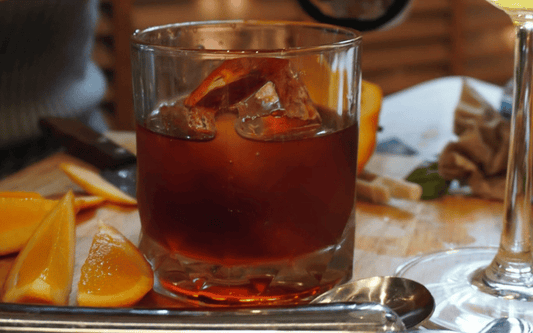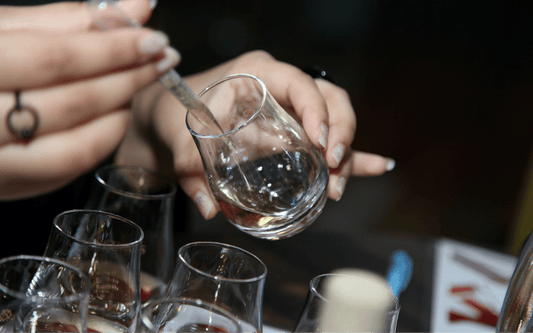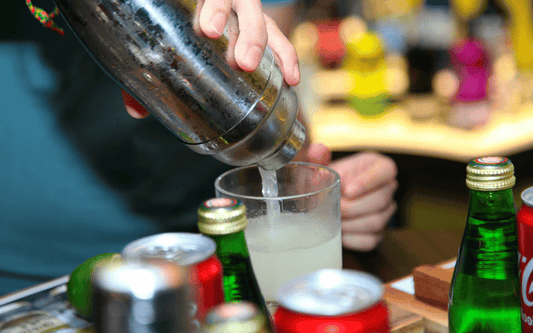VODKA

Vodka is one of the most widely consumed spirits in the world, with a history that spans centuries. Its origins are hotly debated, with both Russia and Poland laying claim to its invention. The word "vodka" is derived from the Slavic word "voda," meaning water, which hints at its clear and pure nature. The first documented production of vodka dates back to the 8th or 9th century in Eastern Europe, where it was initially used for medicinal purposes. Over time, vodka evolved into a popular beverage, becoming an integral part of Russian and Polish culture.
The Process of Making Vodka
Vodka production involves several key steps that contribute to its distinctive characteristics:
-
Fermentation: The process begins with the fermentation of a starch or sugar-rich raw material, such as grains (wheat, rye, corn, barley), potatoes, or even fruits. Yeast is added to the raw material to convert the sugars into alcohol. This fermentation process typically lasts a few days.
-
Distillation: After fermentation, the liquid (known as the "wash") is distilled to increase the alcohol content and remove impurities. Vodka is usually distilled multiple times—sometimes as many as five or more—to achieve a high level of purity and a smooth taste. The distillation process can be carried out using pot stills or continuous column stills.
-
Filtration: Following distillation, the vodka is filtered through materials like activated charcoal, quartz, or even diamonds. This step further purifies the spirit, removing any remaining impurities and refining the flavor.
-
Dilution: The high-proof spirit is then diluted with water to achieve the desired alcohol by volume (ABV), typically around 40%. The quality of the water used in this process is crucial, as it can significantly impact the final product's taste.
-
Bottling: Finally, the vodka is bottled and sealed, ready for distribution. Some brands may add unique touches, such as special flavorings or packaging, to distinguish their product.
Categories of Vodka and How They Are Produced
Vodka can be categorized based on its raw materials, flavor profile, and production methods:
-
Plain Vodka: The most common type, plain vodka is characterized by its neutral taste and lack of distinctive flavors. It is typically made from grains or potatoes and is distilled multiple times for purity.
-
Flavored Vodka: This type of vodka is infused with various flavors, ranging from fruits and herbs to spices and botanicals. The flavoring process can occur during distillation or by adding natural or artificial flavorings afterward. Popular flavors include citrus, vanilla, berry, and pepper.
-
Infused Vodka: Similar to flavored vodka, infused vodka is made by steeping natural ingredients like fruits, herbs, or spices in the vodka for an extended period. This method results in a more intense and authentic flavor compared to flavored vodka.
-
Organic Vodka: Made from organically grown raw materials, organic vodka adheres to strict agricultural and production standards. It is free from synthetic pesticides, fertilizers, and GMOs.
-
Artisanal and Craft Vodka: Produced by small, independent distilleries, artisanal and craft vodkas often emphasize unique production methods, local ingredients, and small-batch production. These vodkas can offer distinctive flavors and character not found in mass-produced brands.
How to Choose Vodka
When selecting vodka, consider the following factors:
-
Raw Material: The base ingredient can significantly impact the vodka's taste. Grain-based vodkas tend to be smoother and lighter, while potato-based vodkas often have a richer, creamier texture.
-
Distillation and Filtration: The number of distillations and the filtration method can affect the vodka's purity and smoothness. More distillations and advanced filtration techniques generally result in a cleaner taste.
-
Brand and Origin: Different regions have distinct vodka traditions and styles. Russian and Polish vodkas are known for their classic profiles, while new-world vodkas from countries like the USA and France often experiment with innovative techniques and flavors.
-
Price: While premium vodkas can be expensive, there are many excellent mid-range options that offer great quality without breaking the bank.
Popular Vodka Cocktails
Vodka's versatility makes it a popular choice for a wide range of cocktails, from classic to contemporary:
-
Martini: A timeless classic, the Martini is made with vodka and dry vermouth, garnished with an olive or a lemon twist.
-
Bloody Mary: A savory brunch favorite, the Bloody Mary combines vodka with tomato juice, spices, and various garnishes like celery, olives, and pickles.
-
Cosmopolitan: A stylish cocktail made famous by "Sex and the City," the Cosmopolitan features vodka, triple sec, cranberry juice, and lime juice.
-
Moscow Mule: A refreshing drink served in a copper mug, the Moscow Mule is made with vodka, ginger beer, and lime juice.
-
Vodka Tonic: A simple yet satisfying mix of vodka and tonic water, often garnished with a lime wedge.
-
White Russian: A creamy, indulgent cocktail made with vodka, coffee liqueur, and cream or milk.
-
Screwdriver: A straightforward and popular choice, the Screwdriver combines vodka with orange juice.
Vodka is a versatile and widely appreciated spirit with a rich history and diverse production methods. From its origins in Eastern Europe to its global popularity today, vodka has earned its place in the world of spirits. Whether you prefer it neat, on the rocks, or mixed into a cocktail, there is a vodka to suit every taste and occasion. Cheers!




